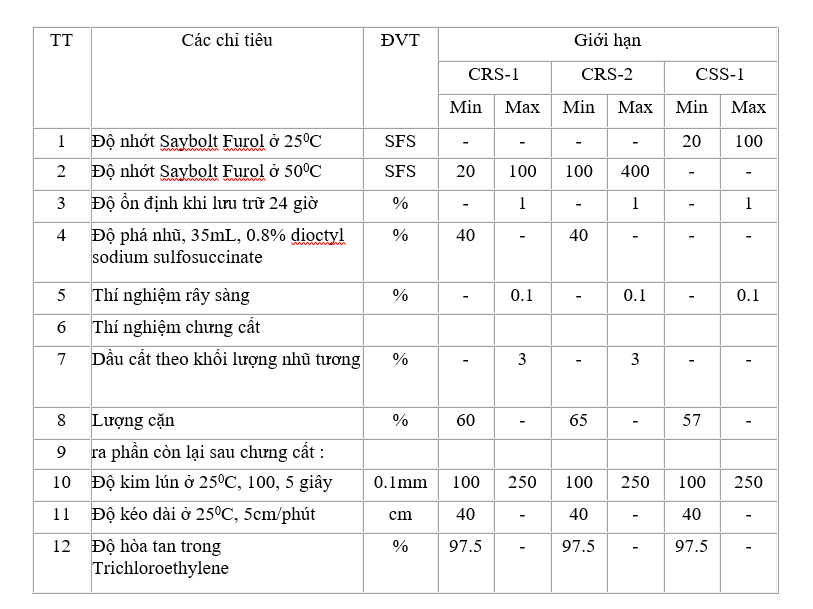Description
-Asphalt emulsion products are created from the process merges the appropriate rate with special asphalt emulsion and water in the form of emulsion stability.
-Special asphalt is the product obtained from crude oil refining technology; includes high-molecular hydrocacbua compounds as: CnH2n + 2, hydrocacbua, biodegradation, aromatic CnH2n (CnH2n-6) and some hetero rings containing nitrogen, oxygen and sulfur.
-According to the structure of asphalt emulsions, colloidal particles can be classified into the types are asphalt emulsion and bitumen emulsion. According to the sticky nature of clinging to rocks, asphalt emulsion is classified into alkaline asphalt emulsions (stick sticking well to the original lime rock) and asphalt emulsion acidic (stick sticking with good original silicon). Based on the popularity of use in Vietnam, this document only refers to the type of asphalt emulsion pros acidity.
-In the State of nature, asphalt emulsion liquid forms, dark brown, evenly.
Application
Application of asphalt emulsion is material to serve the construction of roads and transportation. Liquid bitumen emulsions are usually used to watering the road surface or to make the sticky layer of cling plastic concrete layer between the two.
The typical technique targets
According to the standard ASTM D2397-05

Packaging-preservation
Bitumen emulsion products are often stored, transported by 150-litre drum, with capacity from 200 liter or by car to the dedicated irrigation in normal temperature conditions.
Safety-environment
Asphalt emulsion is a petrochemical product can cause hazard or adverse impact on the environment and human health if not stored and properly use the technical process.













